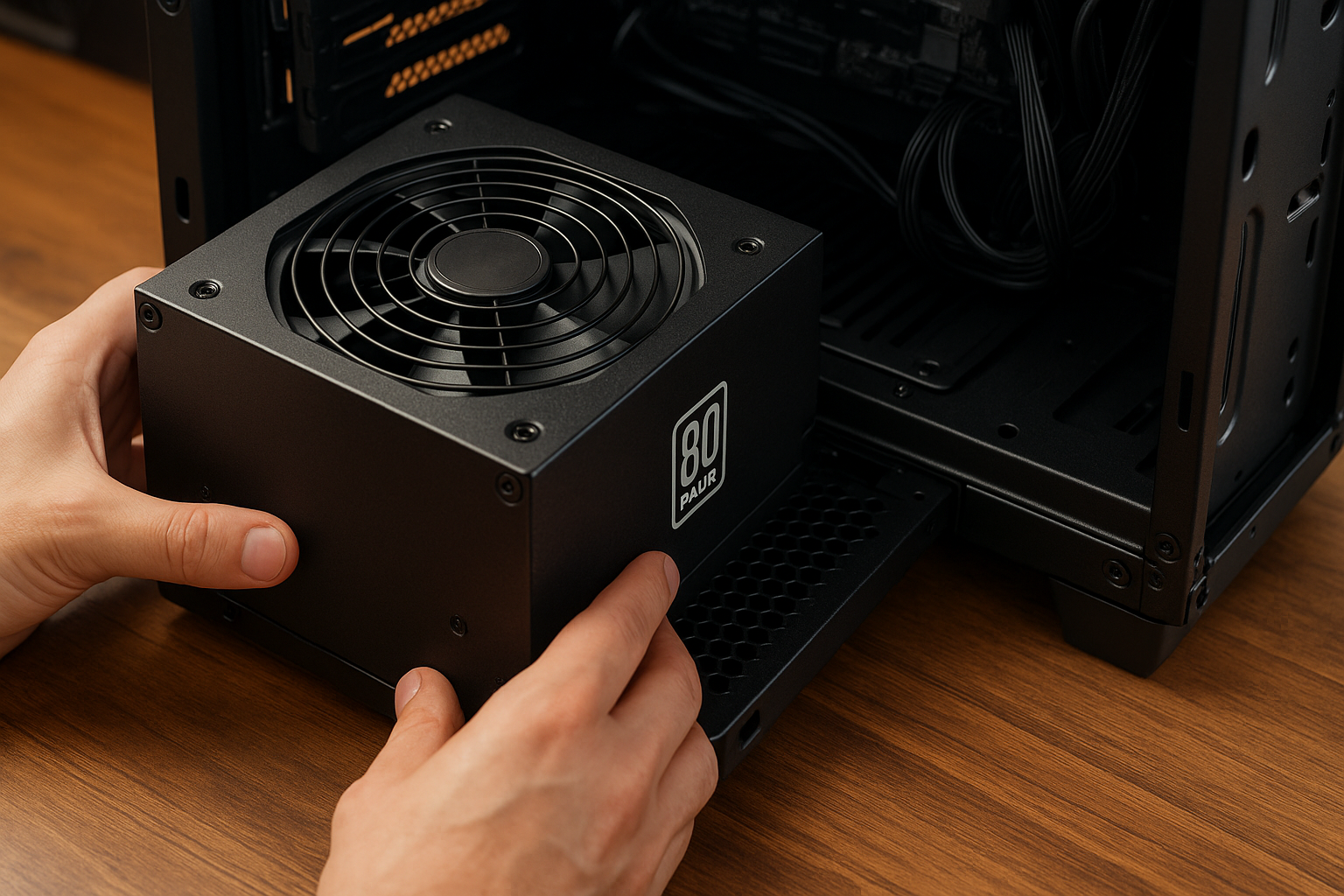When building your own computer, it’s easy to get excited about flashy graphics cards and high-performance processors — but there’s one component that often gets overlooked: the Power Supply Unit (PSU). Choosing the right PSU is essential not only for performance but also for the safety, efficiency, and longevity of your system.
This guide will walk you through the key factors you need to consider when selecting a reliable and efficient PSU for your build.
What Is a PSU and What Does It Do?
The Power Supply Unit is responsible for converting the electrical power from your wall outlet into usable power for your computer’s components. It distributes power to the CPU, GPU, motherboard, drives, fans, and more.
A good PSU ensures:
- Stable voltage delivery
- Protection from power surges
- Efficiency in energy consumption
- Reduced heat and noise
A bad PSU, on the other hand, can cause instability, system failure, or even damage other parts of your PC.
Why PSU Choice Matters
Some beginner builders assume that any PSU will work, as long as it has the required wattage. But the reality is more complex. A poorly made PSU can:
- Fail prematurely
- Damage expensive components
- Cause shutdowns or crashes under load
- Be inefficient and waste power
That’s why choosing a high-quality, correctly sized PSU from a reputable brand is so important.
Determine Your Power Needs
The first step in choosing a PSU is understanding how much wattage your system will require. This depends on your components:
- Entry-level builds (no GPU): 300W–450W
- Mid-range gaming PCs: 500W–650W
- High-end systems with powerful GPUs: 700W–1000W or more
Tools to Help:
You can use online calculators like:
- Cooler Master PSU Calculator
- OuterVision Power Supply Calculator
They allow you to enter your exact components and give you a recommended wattage, including a safe margin.
Efficiency Ratings: What is 80 PLUS?
You’ve probably seen PSUs labeled 80 PLUS Bronze, Silver, Gold, or Platinum. These ratings indicate how efficiently a PSU converts power from AC to DC.
Example Efficiency Levels:
- 80 PLUS Bronze: ~82% efficiency
- 80 PLUS Silver: ~85%
- 80 PLUS Gold: ~87-90%
- 80 PLUS Platinum: ~90-92%
- 80 PLUS Titanium: 94%+
The higher the efficiency, the less power is wasted as heat. This means:
- Lower electricity bills
- Less heat inside your case
- Quieter operation (less fan speed)
For most users, 80 PLUS Bronze or Gold is the sweet spot between price and performance.
Modular vs Non-Modular PSUs
Modern PSUs come in three main cabling styles:
Non-Modular
- All cables are permanently attached
- Cheapest option
- More cable clutter (harder to manage airflow)
Semi-Modular
- Main cables (24-pin, 8-pin CPU) are attached
- Optional cables (SATA, PCIe) are detachable
- Good balance between price and flexibility
Fully Modular
- All cables are detachable
- Cleanest cable management
- Easiest to work with, especially in tight cases
If your budget allows, semi-modular or fully modular PSUs are worth it for better cable management and airflow.
Protections and Safety Features
A quality PSU should have built-in safety features to protect your system:
- OCP (Over Current Protection)
- OVP (Over Voltage Protection)
- UVP (Under Voltage Protection)
- SCP (Short Circuit Protection)
- OTP (Over Temperature Protection)
These ensure your components are shielded from power anomalies that could otherwise cause damage.
Choose a Reputable Brand
Don’t take risks with generic or no-name PSUs. Reliable brands offer consistent quality, better warranty support, and industry-standard protections.
Trusted PSU Brands:
- Corsair
- Seasonic
- EVGA
- Cooler Master
- be quiet!
- Thermaltake
- Antec
Look for independent reviews, customer feedback, and professional testing before you buy.
PSU Form Factors and Size
Most consumer builds use ATX PSUs, which are compatible with standard mid- and full-tower cases. However, there are other sizes:
- SFX / SFX-L: Smaller PSUs for mini-ITX builds
- TFX: Slim, used in compact desktops
- ATX: Standard size for most gaming and workstation builds
Always check the clearance in your case before purchasing a PSU, especially if you’re going with a non-standard case layout.
Future-Proofing Your Build
If you plan to upgrade components later, such as adding a more powerful GPU or additional drives, it’s a good idea to:
- Leave a power buffer of at least 100W
- Choose a PSU with extra connectors (PCIe, SATA)
- Consider a 750W+ Gold-rated PSU for flexibility
This helps you avoid replacing the PSU prematurely during upgrades.
Common Mistakes to Avoid
- Buying just based on wattage without checking quality
- Using a PSU with no efficiency rating
- Ignoring available connectors (e.g., not enough PCIe cables for GPU)
- Installing a PSU upside-down or blocking airflow
- Underpowering a high-end GPU
Final Thoughts: Invest in a Reliable PSU
The PSU is often called the heart of the system, and rightly so. It powers everything — and if it fails, it can take other components with it.
When choosing a power supply:
- Match the wattage to your build’s needs
- Pick a high-efficiency unit (at least 80 PLUS Bronze)
- Prefer modularity for better cable management
- Invest in a reputable brand with proper safety protections
A solid PSU not only protects your system but also supports future upgrades and ensures long-term stability. It’s one of the most important — and smartest — investments you can make in your PC build.
